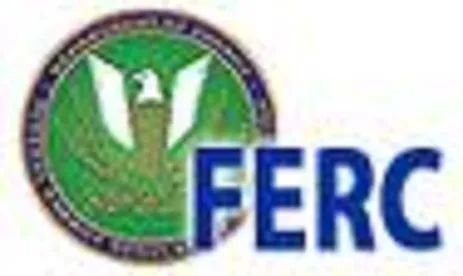On Friday May 3, 2019, the Federal Energy Regulatory Commission (FERC) approved a settlement between FERC’s Office of Enforcement and Virginia Electric Power Company (Dominion) to resolve allegations of market manipulation related to Dominion’s receipt of lost opportunity cost (LOC) credits in the PJM Interconnection, L.L.C. (PJM) market from April 2010 to March 2011. Pursuant to the settlement, Dominion agreed to pay a civil penalty of $7 million, disgorgement of $7 million, and to be subject to ongoing compliance monitoring. This settlement highlights three FERC compliance themes: (1) stakeholder disputes often are proxies for compliance risk, (2) change should always be treated as a compliance moment, and (3) market participants must avoid strategies that contemplate profiting from make-whole payments.
Those who have been active in PJM since 2011 may recall a 2012 settlement agreement reached by PJM, Ingenco Wholesale Power, L.L.C., Monitoring Analytics, L.L.C., and Dominion to resolve what PJM characterized as a “billing error” that resulted in the payment of excessive amounts of Balancing Operating Reserves (BOR) LOC credits from October 2009 through October 2011.[1] It is likely that either the discovery (or analysis) of that billing error uncovered the activity at issue in the enforcement matter, or that the discovery of the activity at issue in the enforcement matter led to PJM’s recognition of the billing error. In either case, this is another example of stakeholder disputes as a canary in the coal mine for compliance risk.[2]
Regardless of the possible connection to the stakeholder dispute, at the core of the enforcement settlement is Dominion’s change in behavior and FERC’s conclusions regarding the motives for the change. This continues a perfect streak of change being at the root of all enforcement actions.[3] As such, an effective compliance program must treat change as a compliance moment. That is, whenever a change occurs (whether in profit and loss, positions, strategy, or market rules), it is important to evaluate any compliance implications.
Finally, FERC appears to concede that the strategy at issue in this settlement was profitable without regard to LOC credits (i.e., the strategy resulted in “greater positive net energy revenue”) but still concludes it was manipulative because Dominion “offered its CT units in a manner that sought to target and maximize LOCs, rather than making the units available to the market based on supply and demand fundamentals.”[4] As such, this settlement should remind market participants that profits from make-whole payments are suspect and any strategy that takes make-whole payments into account, or that results in increased make-whole payments, warrants special scrutiny.
Facts
According to FERC, “PJM established LOCs to encourage generators to offer their resources into the PJM [day-ahead] energy markets, and if awarded a [day-ahead] commitment, to be dispatched as part of PJM’s pool-scheduled resources and thereby allow PJM to control their output to manage system operations.”[5] During the period in question, LOCs would be paid to the combustion turbine (CT) units with day-ahead awards that were not dispatched in the real-time market at the higher of (1) the difference between the real-time locational marginal price (RTLMP) and the day-ahead locational marginal price (DALMP) or (2) the difference between the RTLMP and the higher of the unit’s price-based or cost-based incremental energy offers. Importantly, prior to 2015, the LOC calculation did not account for savings in start-up and no-load costs. This meant that, all else equal, CT units receiving LOC credits would recover revenue equal to or greater than their start-up and no-load costs.
Dominion had participated in PJM since 2005. Among its generation assets, Dominion offered 20 simple-cycle CT units (CT units) at five locations with an aggregate capacity of approximately 2,414 megawatts. Prior to April 1, 2010, Dominion offered its CT units at market-based prices “on the higher side of its estimated costs to minimize the risk of financial loss in the event their estimated costs proved to be lower than actual costs and/or the actual DALMP was insufficient to cover actual costs.”[6] This approach resulted in relatively few day-ahead commitments for Dominion’s CT units and often left the units idle. Late in 2009, Dominion concluded that this approach was too conservative and also recognized that LOC credits “had the potential to both produce positive margin and partially offset operational costs”[7] (e.g., staffing and fuel costs associated with day-ahead awards).
From April 2010 through September 2010, Dominion raised its start-up and no-load values and decreased its incremental price-based offers. This was expected to increase the number of day-ahead commitments and encourage longer real-time run times when dispatched. Notably, the increased start-up values for some units were 30-100% higher than the values previously used. Also worth mentioning, the CT units were dispatched with day-ahead awards approximately 70% of the time (with an average run time of approximately 10 hours).
Seeing that the new strategy “resulted in more [day-ahead] awards for its CT units, increased [real-time] run times, and greater positive net energy revenue, and that the CT units with higher start-up values and correspondingly lower incremental energy offers earned greater LOC revenues,”[8] Dominion applied the same strategy to all of its CT units from October 2010 through March 2011.
Highlights
Market participants offering generation resources in organized markets should carefully review this settlement and the order approving it. While recognizing that stipulated facts are negotiated, readers should take note of what was agreed and what was left unsaid:
-
FERC agreed that the offer strategy decreased the CT units’ idleness and increased the energy revenue (i.e., make-whole payments were not the sole benefit);
-
There was no suggestion that Dominion failed to honor its day-ahead commitments; and
-
The settlement in no way suggests that any tariff violation occurred or that the adjustments to start-up and no-load were inaccurate or misleading or that there was any fraud or deception (as those terms are commonly understood); but
-
Increasing start-up and no-load was intended to “reduce the chance the units were dispatched by PJM” in real-time.[9]
The facts as described in the settlement paint a picture of offers that were developed with the intent to earn the greatest amount of energy revenue possible while relying on make-whole payments to offset risks associated with submitting competitive offers in the day-ahead market. However, while not emphasized in the settlement, structuring offers to increase the likelihood of the CT units being committed day-ahead, while at the same time reducing the likelihood that they would be dispatched in real-time, likely contributed to FERC staff’s conclusion that the strategy was not based on supply and demand fundamentals and impaired the LOC provisions and PJM’s unit commitment process.
In sum, this order is a continuation of themes already expressed in prior FERC enforcement cases, but it highlights the challenge for market participants who seem to be asked to completely ignore certain revenue flows (i.e., make-whole payments) when developing strategies for offering generation but face the reality that their strategies can influence such flows. At best, this case cautions that any strategy that is anticipated to increase make-whole payments (whether by design or by predictable effect) should be scrutinized by compliance. Conveniently, this rule of thumb is consistent with a philosophy that any change in strategy should be so scrutinized and vetted for compliance.
[1] See Letter Order, 141 FERC ¶ 61,115 (2012).
[2] Other examples include the various enforcement matters involving fuel procurement in ISO-New England, Inc. during the same period when stakeholders were debating the market’s fuel policy. See, e.g., Entergy Nuclear Power Marketing, LLC, 164 FERC ¶ 61,051 (2018); Footprint Power LLC, et al., 163 FERC ¶ 61,198 (2018).
[3] See, e.g., ETRACOM LLC, et al., 163 FERC ¶ 61,022 (2018) (relying on changes in activities during discrete period to infer motive); BP America Inc., et al., 156 FERC ¶ 61,031 (2016) (pointing to array of changes to support inference of intent).
[4] Virginia Elec. Power Co., 167 FERC ¶ 61,103, P 15 (2019).
[5] Id. at P 6.
[6] Id. at P 8.
[7] Id.
[8] Id. at P 11.
[9] Id. at P 14.




 />i
/>i

